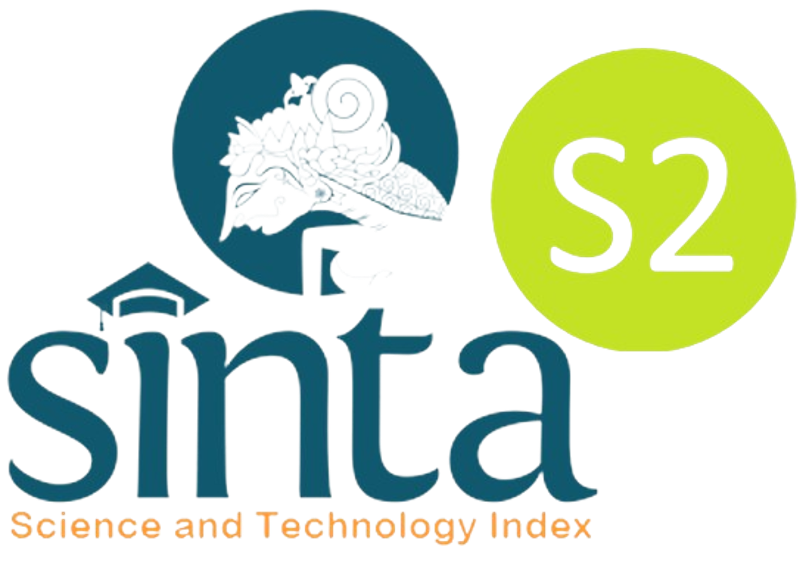Molecular Simulation Assisted Discovery Learning to Improve Higher Order Thinking Skills in Chemical Equilibrium Concepts
Abstract
Abstract: The purpose of this study is to describe the effectiveness of discovery learning assisted by molecular simulation to improve higher order thinking skills in chemical equilibrium materials. The method used in this study was a quasi-experimental with the matching only pretest postest control group design. The population were all students of XI MIA MAN 1 Bandar Lampung in the academic year 2019 2020. The sample was XI MIPA 5 as an experimental class and XI MIPA 6 as a control class obtained by purposive sampling technique. The data analysis technique used was the t test. The results showed the n gain average of students high level thinking skills in the molecular simulation assisted learning class were 0.78 with high criteria, whereas in the control class was 0.58 with medium criteria. The t test results showed students n-gain in the experiment class was significantly higher than control class. It can be concluded that the discovery learning model assisted by molecular simulations was effective in improving students higher order thinking skills.
Keywords: chemical equilibrium, discovery learning models, higher order thinking skills, molecular simulation
Abstrak: Penelitian ini bertujuan untuk mendeskripsikan efektivitas model pembelajaran discovery berbantuan simulasi molekul dalam meningkatkan keterampilan berpikir tingkat tinggi pada materi kesetimbangan kimia. Penelitian ini menggunakan metode kuasi eksperimen dengan desain penelitian the matching only pretest-postest control group design Populasi dalam penelitian ini yaitu, seluruh siswa kelas XI MIA MAN 1 Bandar Lampung tahun ajaran 2019 2020. Sampel dalam penelitian yaitu kelas XI MIA 5 sebagai kelas eksperimen dan XI MIA 6 sebagai kelas kontrol yang dihasilkan dengan menggunakan teknik purposive sampling. Teknik analisis data yang digunakan adalah uji perbedaan dua rata-rata dengan uji t. Hasil penelitian menunjukan rata-rata nilai n-gain keterampilan berpikir tingkat tinggi siswa pada kelas pembelajaran discovery berbantuan simulasi molekul sebesar 0,78 berkriteria tinggi, sedangkan pada kelas pembelajaran menggunakan metode ceramah sebesar 0,58 berkriteria sedang. Hasil uji t menunjukkan n-gain pada eksperimen lebih tinggi secara signifikan daripada kelas kontrol. Berdasarkan hasil penelitian dapat disimpulkan bahwa model pembelajaran discovery berbantuan simulasi molekul efektif untuk meningkatkan keterampilan berpikir tingkat tinggi siswa.
Kata kunci: model pembelajaran discovery, kesetimbangan kimia, keterampilan berpikir tingkat tinggi, simulasi molekul.
Full Text:
PDFReferences
Anderson, L.W & Krathwohl, D. R. (2001). A Taxonomy for Learning, Teaching,and Assessing: A Revision of Bloom’s Taxonomy of Educational Objectives.Allyn dan Bacon. Addison Wesley Longman, New York.
Allen, M. P. (2007). Educational aspects of molecular simulation. Molecular Physics, 105(2-3), 157-166.
Al Mamun, M. A., Lawrie, G., & Wright, T. (2020). Instructional design of scaffolded online learning modules for self-directed and inquiry-based learning environments. Computers & Education, 144, 103695.
Al-Moameri, H. H., Jaf, L. A., & Suppes, G. J. (2018). Simulation approach to learning polymer science. Journal of Chemical Education, 95(9), 1554-1561.
Arikunto, S. (2006). Dasar-dasar Evaluasi Pendidikan. Bumi Aksara, Jakarta.
Bennie, S. J., Ranaghan, K. E., Deeks, H., Goldsmith, H. E., O’Connor, M. B., Mulholland, A. J., & Glowacki, D. R. (2019). Teaching enzyme catalysis using interactive molecular dynamics in virtual reality. Journal of Chemical Education, 96(11), 2488-2496.
Birgili, B., Seggie, F. N., & Oğuz, E. (2021). The trends and outcomes of flipped learning research between 2012 and 2018: A descriptive content analysis. Journal of Computers in Education, 1-30.
Edwards, B. I., Bielawski, K. S., Prada, R., & Cheok, A. D. (2019). Haptic virtual reality and immersive learning for enhanced organic chemistry instruction. Virtual Reality, 23(4), 363-373.
Fraenkel, J. R., Wallen, N. E., & Hyun, H. H. (2012). How to Design and Evaluate Research in Education. USA: The McGraw-Hill Companies.
Hake, R. R. (1998). Interactive Engagement Versus Traditional Methods, A Six
Thousand-Student Survey of Mechanics Test Data for Introductory Physics Coures. American Journal of Physics, 66(1), 67-74.
Imaniastuti, R. (2011). Simulasi Dinamika Molekul Neuraminidase Virus Influenza A Subtipe H1N1 dengan Inhibitor Potensial Peptida Siklis Disulfida (DNY, LRL, NNY). Depok: Universitas Indonesia.
Kurniawan, O., Koh, L. L. A., Cheng, J. Z. M., & Pee, M. (2019). Helping Students Connect Interdisciplinary Concepts and Skills in Physical Chemistry and Introductory Computing: Solving Schrödinger’s Equation for the Hydrogen Atom. Journal of Chemical Education, 96(10), 2202-2207.
Osman, K., & Lay, A. N. (2020). MyKimDG module: an interactive platform towards development of twenty-first century skills and improvement of students’ knowledge in chemistry. Interactive Learning Environments, 1-14.
O’Connor, M. B., Bennie, S. J., Deeks, H. M., Jamieson-Binnie, A., Jones, A. J., Shannon, R. J., ... & Glowacki, D. R. (2019). Interactive molecular dynamics in virtual reality from quantum chemistry to drug binding: An open-source multi-person framework. The Journal of chemical physics, 150(22), 220901.
Saputri, A. C. (2019). Improving Students' Critical Thinking Skills in Cell-Metabolism Learning Using Stimulating Higher Order Thinking Skills Model. International Journal of Instruction, 12(1), 327-342.
Sharma, A. K., & Asirwatham, L. (2019). Learning by Computing: A First Year Honors Chemistry Curriculum. In Using Computational Methods To Teach Chemical Principles (pp. 127-138). American Chemical Society.
Stull, A. T., Gainer, M. J., & Hegarty, M. (2018). Learning by enacting: The role of embodiment in chemistry education. Learning and Instruction, 55, 80-92.
Syah. (2004). Psikologi Pendidikan dengan Pendekatan Baru. Bandung: PT Remaja Rosdikarya,
Treagust, D.F., Chittleborough, G.D., & Mamiala. (2003). The Role of Submicroscopic and Symbolic Representations in Chemical Explanation. International Journal od Science Education, 25(11): 1353-1368.
Trianto. (2007). Model-Model Pembelajaran Inovatif Berorientasi Konstruktifistik.
Jakarta: Prestasi Pustaka Publisher.
Xie, Q., & Tinker, R. (2006). Molecular dynamics simulations of chemical reactions for use in education. Journal of Chemical Education, 83(1), 77-83.
Zohar, A. R., & Levy, S. T. (2021). From feeling forces to understanding forces: The impact of bodily engagement on learning in science. Journal of Research in Science Teaching.
Refbacks
- There are currently no refbacks.
Copyright (c) 2021 Jurnal Pendidikan MIPA

This work is licensed under a Creative Commons Attribution-ShareAlike 4.0 International License.

The copyright is reserved to The Jurnal Pendidikan MIPA that is licensed under a Creative Commons Attribution-ShareAlike 4.0 International License.

